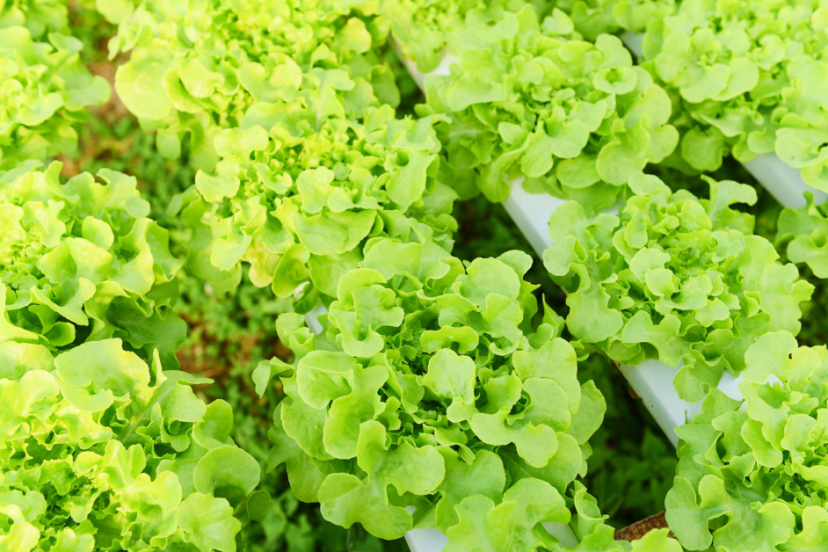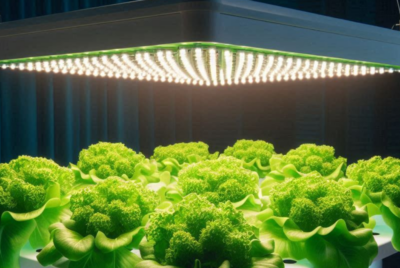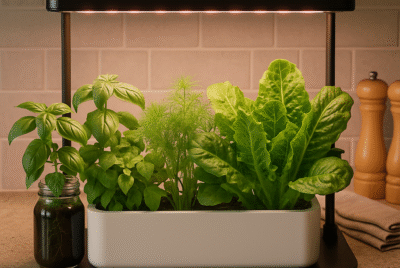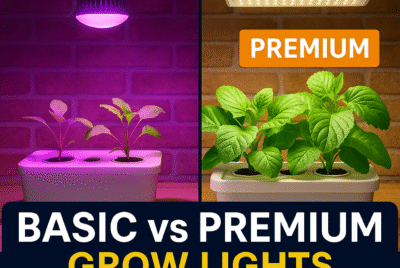How to Grow Hydroponic Lettuce: A Guide to Fresh and Nutritious Greens
Growing your own fresh and nutritious lettuce is a rewarding experience, and hydroponics offers an efficient and space-saving method to achieve that. In this guide, I’ll walk you through the process of growing hydroponic lettuce, from understanding the basics to reaping the benefits of your own homegrown greens.
Understanding Hydroponic Lettuce
Hydroponics is a soil-less cultivation method that allows plants to grow in nutrient-rich water, providing them with all the essential elements for healthy growth. Lettuce is particularly well-suited for hydroponic systems due to its shallow root system and
fast-growing nature. By harnessing the power of hydroponics, you can enjoy a continuous supply of fresh lettuce throughout the year.
Benefits of Growing Hydroponic Lettuce
- Year-Round Cultivation: With hydroponics, you can grow lettuce regardless of the season, ensuring a constant supply of fresh greens.
- Space Efficiency: Hydroponic systems require less space than traditional soil-based gardening, making them ideal for small gardens, balconies, or indoor settings.
- Water Conservation: Hydroponics uses up to 90% less water compared to traditional soil gardening, making it a sustainable and eco-friendly choice.
- Faster Growth and Higher Yields: Lettuce grown hydroponically tends to grow faster and yield higher quantities compared to traditional methods.
Disease and Pest Control: By eliminating soil, hydroponics reduces the risk of soil-borne diseases and makes pest management more effective.
Choosing the Right Hydroponic System
Before starting your hydroponic lettuce garden, it’s important to choose the right Hydroponic kit that suits your space, budget, and preferences. Consider options such as Deep Water Culture (DWC), Nutrient Film Technique (NFT), or Drip Kit, and select the one that aligns with your needs.
Selecting the Ideal Lettuce Varieties
Lettuce comes in various types, including loose-leaf, romaine, and head lettuce. When selecting lettuce varieties for your hydroponic garden, choose those that thrive in controlled environments and have a shorter growing cycle to maximize your harvest.
Preparing the Growing Environment
To ensure optimal growth, create a suitable environment for your hydroponic lettuce. Prepare the growing area, install grow lights if necessary, and set up a proper ventilation system to maintain the ideal temperature and humidity levels. Enure you have the right hydroponics kit to grow in. Depending on size, you can place the kit on your kitchen counter or you could grow hydroponic lettuce in your hydroponics greenhouse.
Providing Optimal Lighting and Temperature
Lettuce requires adequate lighting for photosynthesis. If natural light is insufficient, supplement with LED or fluorescent grow lights. Additionally, maintain a temperature range of 60-70°F (15-21°C) during the day and slightly lower at night for optimal growth.
Nutrient Solution and pH Management
Hydroponic lettuce relies on a nutrient solution to provide essential elements for growth. Use a balanced hydroponic fertilizer and carefully monitor the pH level of the solution. Lettuce prefers a pH range between 5.5 and 6.5 for optimal nutrient uptake.
Planting and Transplanting Lettuce
Start by germinating lettuce seeds in a nursery tray or small pots filled with a growing medium. Once the seedlings have developed a few true leaves, transplant them into the hydroponic system, ensuring the roots are submerged in the nutrient solution.
Maintaining Proper Watering and Nutrient Levels
Regularly monitor the water level in your hydroponic system, ensuring that the roots are consistently submerged. Maintain the appropriate nutrient levels by regularly testing the solution and adjusting as necessary. Avoid overwatering or under-watering, as it can negatively impact plant health.
Pruning and Training Lettuce Plants
As your lettuce plants grow, prune off any yellow or damaged leaves to maintain plant health and encourage new growth. Some lettuce varieties benefit from training techniques like trimming the top growth to promote bushier growth and increased yield.
Managing Pests and Diseases
While hydroponic systems reduce the risk of soil-borne pests and diseases, it’s still important to remain vigilant. Regularly inspect your plants for signs of pests like aphids or whiteflies and take appropriate measures to control them. Maintain cleanliness in your system to prevent the spread of diseases.
Harvesting and Enjoying Hydroponic Lettuce
Once your lettuce plants have reached maturity, it’s time to harvest the leaves. Harvest outer leaves as needed, allowing the inner leaves to continue growing. Enjoy your freshly harvested hydroponic lettuce in salads, sandwiches, or as a nutritious addition to any meal.
Troubleshooting Common Issues
- Yellowing Leaves: Yellow leaves may indicate nutrient deficiencies, pH imbalance, or overwatering. Adjust the nutrient solution and pH levels accordingly. Lettuce grows best at pH 5.5–6.5 with 5.8 being best optimal target value.
- Algae Growth: Algae growth in the system can occur due to excessive light exposure or nutrient imbalances. Shield the system from excessive light and maintain proper nutrient levels.
- Root Rot: Root rot is typically caused by overwatering or poor oxygenation. Ensure proper drainage and oxygenation of the root zone.
- Nutrient Imbalances: Monitor nutrient levels regularly and adjust the nutrient solution accordingly to prevent nutrient deficiencies or toxicities.
Conclusion
Growing hydroponic lettuce offers a range of benefits, from year-round cultivation to space efficiency and water conservation. By understanding the fundamentals of hydroponic gardening, selecting the right system, and providing optimal care, you can enjoy a bountiful harvest of fresh and nutritious lettuce in your own home. Enjoy the benefits of growing food in the comfort of your home, and join the many urban farmers who utilize this simple, but yet effective farming.
FAQs
1. Can I use tap water for my hydroponic system?
It’s best to use filtered or dechlorinated water to avoid potential issues caused by chlorine or impurities in tap water. You can use a water filter or let tap water sit out overnight to allow chlorine to dissipate.
2. How often should I check and adjust the nutrient solution?
Monitor the nutrient solution at least once a week and adjust as needed. pH and nutrient levels may fluctuate over time, so regular testing is crucial for maintaining a healthy hydroponic system.
3. Do I need to use artificial lighting for hydroponic lettuce?
While lettuce can grow under natural light, supplementing with artificial lighting ensures consistent and optimal growth, especially in indoor or low-light environments.
4. Can I reuse the nutrient solution?
It’s generally recommended to replace the nutrient solution every 1 to 2 weeks to maintain nutrient balance and prevent the buildup of salts and potential nutrient imbalances.
5. What are the common pests that affect hydroponic lettuce?
Common pests in hydroponic lettuce include aphids, whiteflies, and spider mites. Regular monitoring and implementing integrated pest management techniques can help control these pests effectively.
Remember, hydroponic lettuce cultivation allows you to enjoy fresh, pesticide-free greens right at your fingertips. With proper care and attention to the growing environment, you can have a thriving hydroponic lettuce garden that provides you with a continuous supply of nutritious and delicious greens throughout the year.
So, why wait? Get started with your hydroponic lettuce adventure and witness the joys of homegrown, vibrant lettuce that you can enjoy in your salads, sandwiches, and favorite dishes. Happy growing!
*We may earn a commission from purchases made through our links, at no cost to you. This does not affect our product recommendations. Please see our disclosure to learn more.




